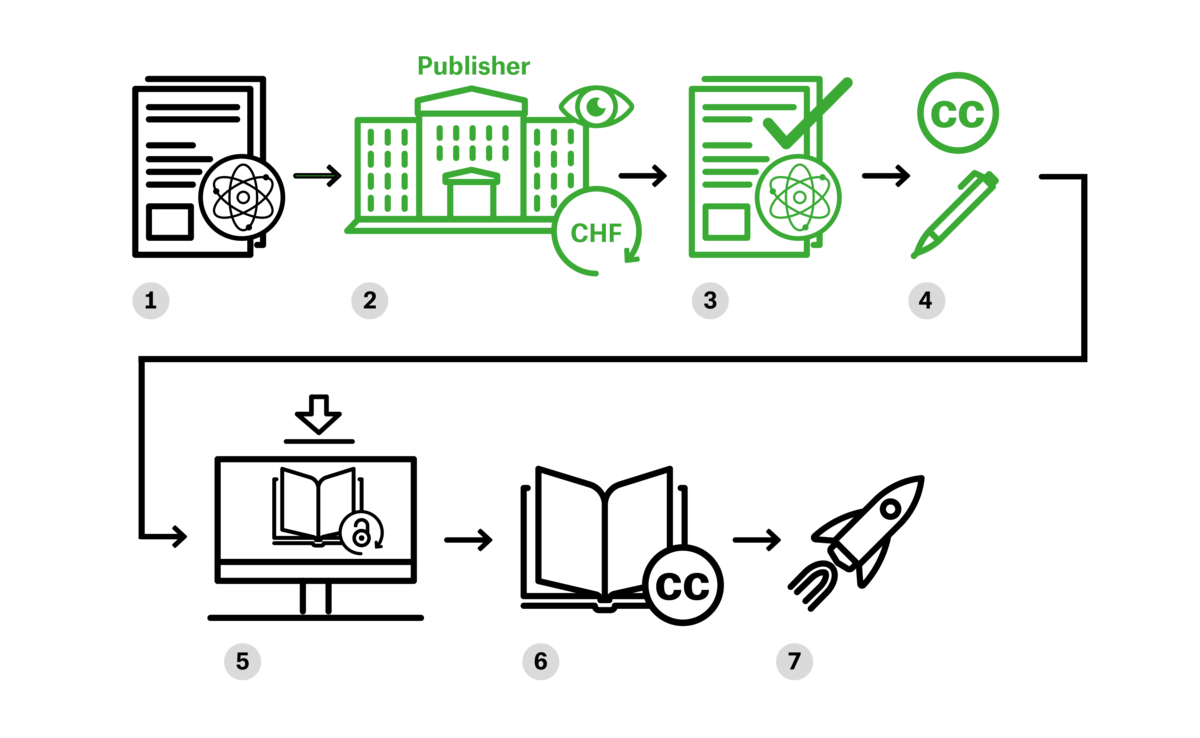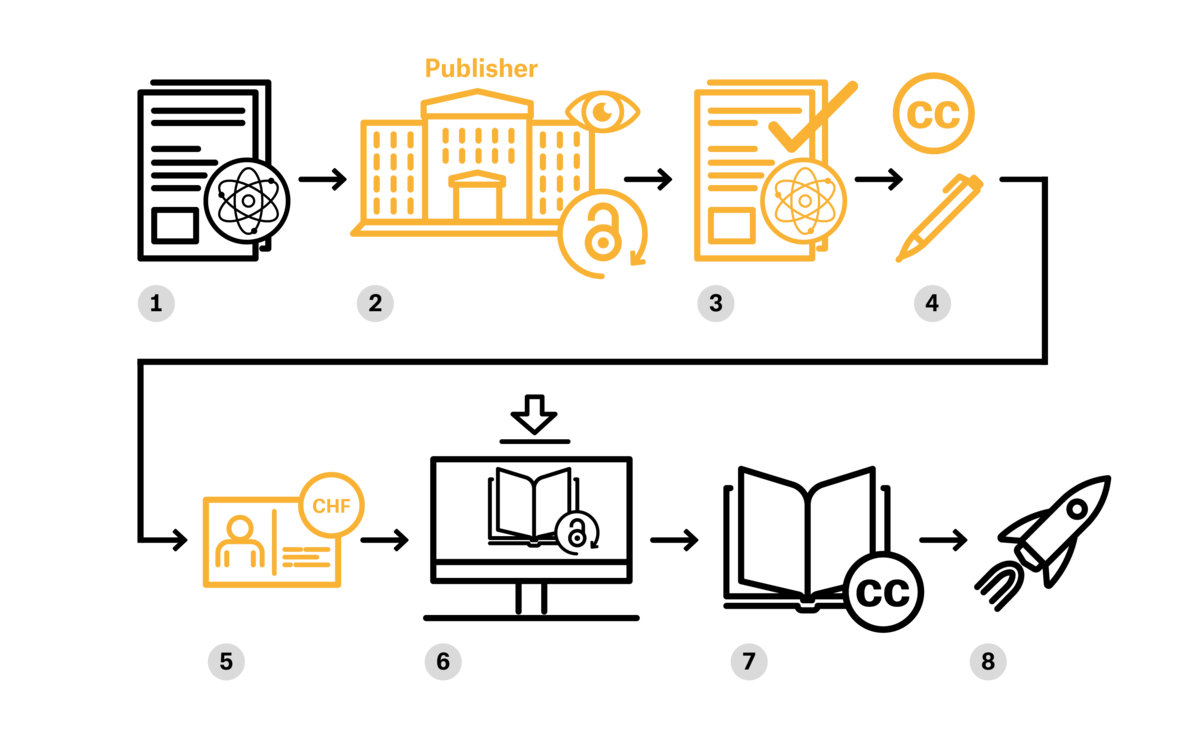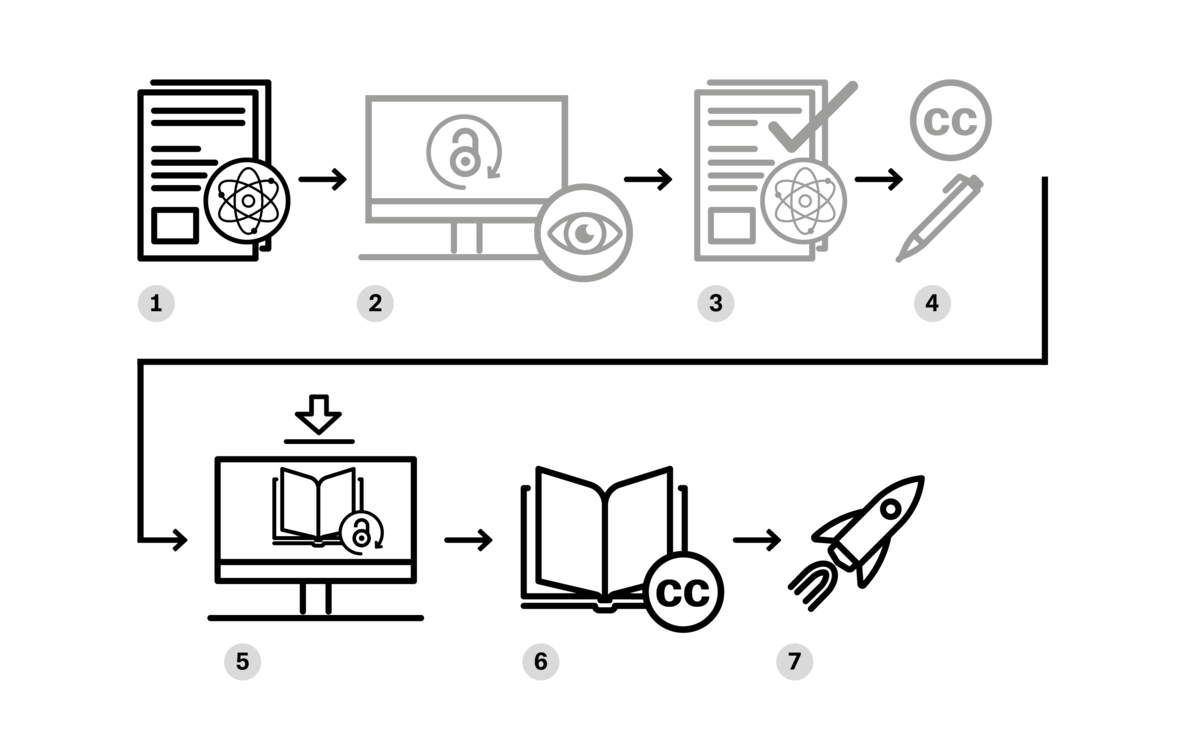Main Content
Information on Open Access
The academic publishing landscape in Switzerland is heterogeneous and multilingual. The Revised Strategy therefore favours various open access publication models and formats. These include publishing in open journals or books (Gold OA, Diamond OA) and depositing finalised manuscripts in repositories (Green OA). By promoting this diversity, the strategy aims to reduce systemic dependencies - which in turn helps to establish a publishing ecosystem characterised by academic quality and financial sustainability.
In the past, researchers published their articles in a traditional journal or their book with a traditional publisher. After publication in Closed Access, an article was only available to subscribers and a book could be purchased in a bookshop. Today, there are various open access publication options so that research results can be made openly accessible worldwide:
Green Open Access

Research results are first published in a closed format (e.g., subscription journal or book in bookshops) and then published separately in open access in a public database. These open access versions must be peer-reviewed versions (accepted manuscript / post print / version of record) of the published content, which are made available without embargo.
- Results of publicly funded research
- Submission of the manuscripts to traditional publishers and peer review
- Acceptance for publication
- Transfer of copyright to the publishers ̶ authors retain the right to distribute a copy of the accepted manuscript via Open Access repositories
- Open Access "secondary publication" after the embargo period, thereby making it accessible to the public
- Public reuse rights under open licences
- Accelerated scientific progress and added value of public investment for society, the economy and politics
Gold Open Access

With Gold Open Access, research results are first published in open access with an open licence - they are therefore immediately freely accessible. These publications are published in open access journals, open access book collections or other formats. The costs are covered by publication fees, which are paid for authors (often by universities).
- Results of publicly funded research
- Submission of manuscripts to a Gold Open Access publisher and review by peers
- Acceptance for publication
- Copyright remains with the author; granting of the ‘licence to publish’ to the Open Access publisher
- Possible "publication fee" to cover publishing costs
- Open Access "first publication", thereby making it accessible to the public
- Public reuse rights under open licences
- Accelerated scientific progress and added value of public investment for society, the economy and politics
Diamond Open Access

In Diamond OA (also known as Platinum OA), research results are published first under an open licence - they are therefore immediately freely accessible. With Diamond OA, neither authors nor readers have to pay fees. The costs for Diamond OA are covered by institutional funds or other financing mechanisms.
- Results of publicly funded research
- Submission of manuscripts to a Diamond journal or platform and review by peers
- Acceptance for publication
- Copyright remains with the author; granting of the ‘licence to publish’ to the journal / platform
- Open Access "first publication", thereby making it accessible to the public
- Public reuse rights under open licences
- Accelerated scientific progress and added value of public investment for society, the economy and politics